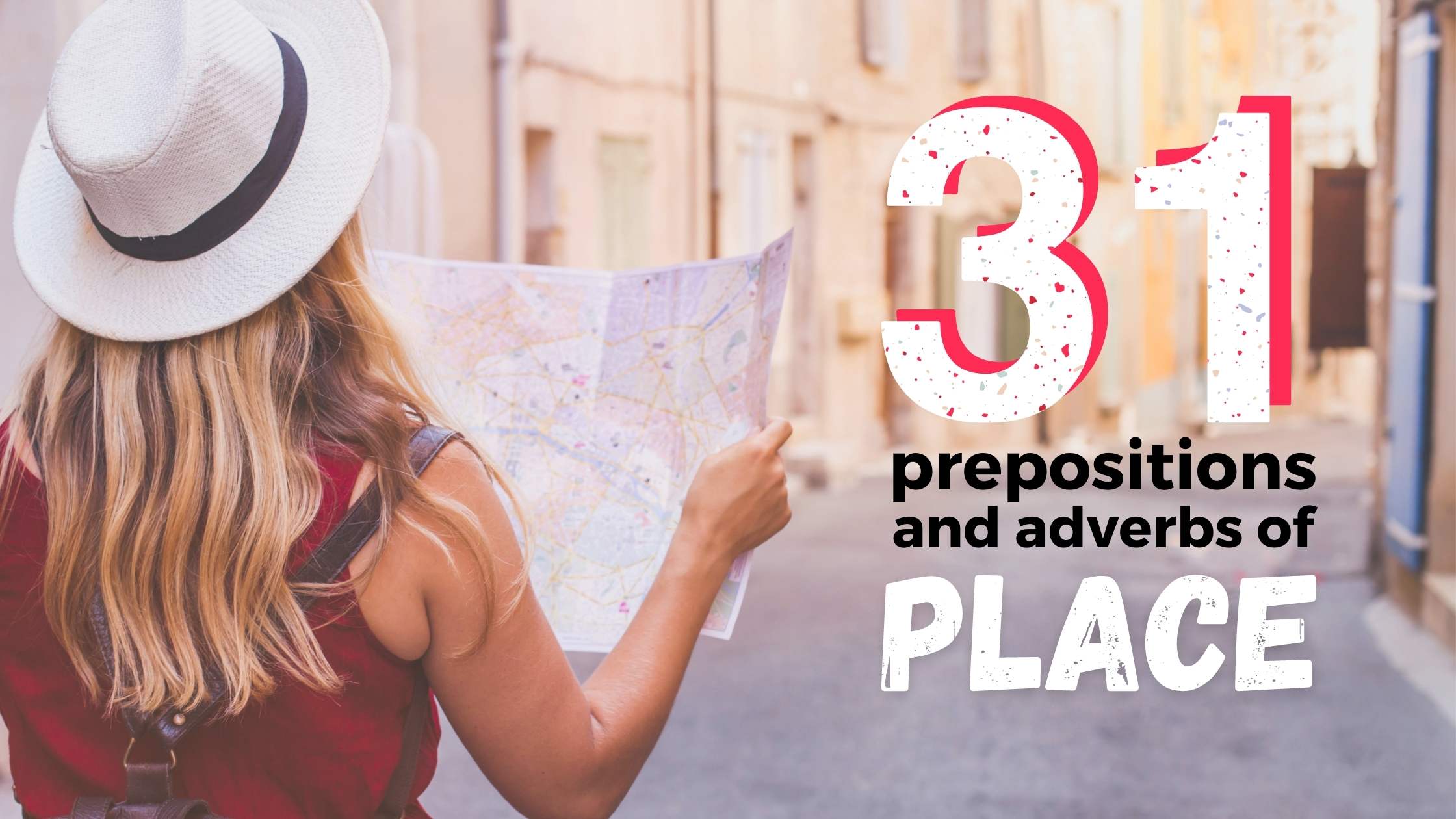Where is it? Learn 31 Prepositions and Adverbs of Place in English
Do you know someone who always manages to lose something? Are you that person? If so, this article will help you understand how to describe locations in English using prepositions of place and adverbials of place. Whenever we need to talk about the location of something or someone, we will use one of the prepositions of place in English, such as in, on, at, behind, and between. The same thing happens with adverbs — some of them are used to describe how we do something or how often we do that action. We also use adverbs, known as adverbs of place, to indicate where an action happens. We will go over these two categories in this blog post. Keep reading for examples and exercises!
Where: the question word for places
To learn the location of something or someone, you can ask questions using the question word where. This is the structure to follow if you need to ask where something is.
| Questions using “to be” | Questions using other verbs |
| Where + to be + subject + complement (optional) | Where + auxiliary verb (do/does) + subject + base verb + complement (optional) |
| Where is your house? | Where do you live? |
| Where are they going? | Where does she work? |

In, on, at and many more prepositions of place
You have probably studied the prepositions in, on, at before. They are some of the most common words in English! English speakers use them to describe either time or place. Since this blog post is about prepositions of place, let’s go ahead and understand how they are used to express the location of something.
Quick tips to use in to describe locations
Use in with names of countries, cities or neighborhoods. Here are some examples of sentences in which we use in to indicate location.
- She was born in France.
- They live in San Francisco.
- I would like to live in Chinatown.

We also use in to indicate places within buildings, voids, and some types of private transportation.
- Where are you? I’m in bed.
- They will have dinner in the living room.
- The plane is in the sky.
- You can get in the car.
Finally, if one object is within another object (internal location), use the preposition in.
Take this symbol for example – ©. The c is in the circle.
How to use on in English
Many English learners have difficulty understanding how on is different from in. The good news is that there are some rules that will help you understand them. For starters, we use on with street names.
- He lives on 5th Avenue.
- They work on Main Street.
We also use on with building floors, displays, and public transporation.
- My room is on the second floor.
- Is there any dessert on the menu?
- We are on the bus.

Finally, if one object is resting on the top of another object, use the preposition on.
- There is a bird on the roof.
- The cat is on the table.
Read more about the preposition on here.
Using at to get specific
We use ‘at’ with more specific or precise places. One rule you can always follow with at is with numbered addresses. An address is the exact location of a place on a map. Let’s take a look at some examples:
- Susy lives at 148 Holland Street.
- The office is at 784 39th street.
Remember how we use on with street names? If you add a number to the street name (making it an address), you have to use at to describe that place.
There are other situations when you should use at. These include events, locations which are relative to a person, boundaries, and points of entry.
| Events | Relative locations | Boundaries | Points of entry |
| at the wedding | at home | at the top of the page | at the door |
| at the concert | at work | at the bottom | at the traffic signal |
| at the party | at school | at the end of the road | at the border |
| at the conference | at the doctor’s office | at the start | at the entrance |

Finally, we usually use at after verbs like be, stay, or do (something).
- I am at the hotel.
- We stayed at my brother’s house.
- We do karate at that studio.
Other prepositions of place
Besides on, in, and at, there are other prepositions we can use to talk about where someone or something is. Take a look at them in the table below:
| Preposition | Sentence |
| in front of | The hospital is in front of the school. |
| behind | My car is parked behind the truck. |
| next to beside | Julia is sitting next to/beside him. |
| near close to | The library is near the hotel/close to the hotel. |
| between | The pharmacy is between the supermarket and the bank. |
| above | The neighbors in the apartment above mine are noisy. |
| over | He put a blanket over her. |
| under | There is a rug under the sofa. |
| below | My apartment is below theirs. |
| across from opposite | I live across from the bus stop. |
Adverbs of place
Adverbs of place describe where a situation occurs. The most common adverbs of place are here and there. We use here to talk about something that is near the speaker, and there is used when the object is located further away. Here are some examples of these two adverbs.
- Lucy is over there!
- My car keys are here.
- Where is your backpack?
It’s there, beside that chair.
Here are some other adverbs of place:
| Adverbs of place | Sentence |
| near/far | Where is the bank? It’s near the school. It’s far from here. |
| somewhere/anywhere/nowhere | I can’t find my wallet, but I know I put it somewhere. Do you know anywhere that serves good Indian food? There’s nowhere to put anything in this fridge. |
| upstairs/downstairs | Where is your bedroom? It’s upstairs/downstairs. |
| inside/outside | Where is your dad? He’s outside. |
| towards | She is walking towards him. |
| around | He put his arms around her. |
| away | He is running away from me. |
| up/down | She is going up the ladder. |
We know prepositions of place can make us confused sometimes, but this guide is here to help you understand how to use each one of those. We hope this blog post helps you study prepositions of place in English and adverbs of place in English. Also, make sure to check out this page with games and exercises for you to practice prepositions of time. If you have any questions about this topic, let us know in the comment section below!

